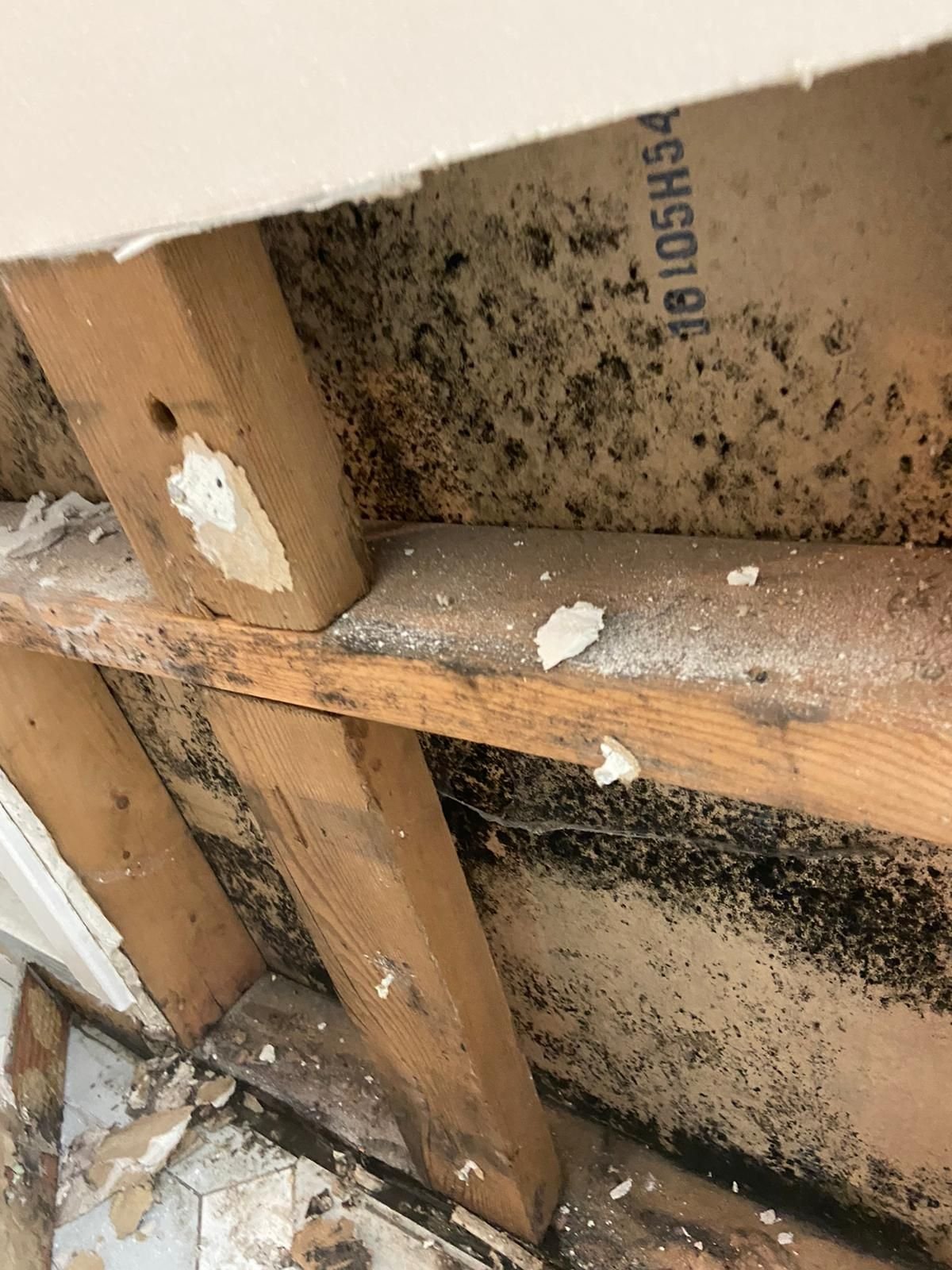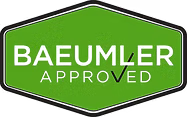Toxic black mold can grow into large infestations within days, so it’s crucial to clean black mold promptly to prevent further spread.
Quick action becomes crucial if you find black mold in your home. Those dark spots on walls or ceilings signal more than just an aesthetic problem. Your lungs and nervous system could suffer from extended black mold exposure.
The feared black mold in most homes goes by the name Stachybotrys chartarum.
Many people reach for harsh chemicals, but vinegar works better than bleach to kill mold. White vinegar’s mild acidity makes it powerful enough to eliminate more than 80% of mold species. You can also fight black mold with common items like baking soda and hydrogen peroxide.
This detailed guide shows you the safe and best way to clean black mold Toronto. We provide practical, step-by-step solutions to identify dangerous growths and stop future outbreaks. Our advice helps protect your home and health.
Identifying and Understanding Toronto Black Mold
What black mold Toronto looks like
Black mold isn’t always black, despite what its name suggests. Most people discuss Stachybotrys chartarum (S. chartarum) as black mold, but you’ll see it in dark shades from greenish-black to dark brown. The mold creates circular, clustered patterns and feels either fuzzy or slimy to the touch. The fungus often leaves green stains on surfaces after you wipe it away.
Moisture levels change the mold’s appearance. It looks wet and slimy during active growth but becomes dry and powdery once its water source runs out. You’ll notice a distinct musty smell that reminds people of rotting plants or damp paper.
Common places it grows in homes
Black mold runs on what experts call the “trifecta” – humidity, moisture, and poor airflow. The mold needs temperatures between 40-100°F (4.4-38°C) and organic materials with cellulose to feed on.
Your bathroom tops the list of vulnerable spots, especially around shower stalls, tiles, and curtains. Basements and crawlspaces attract mold because of leaks, condensation, and poor ventilation. Kitchen areas create perfect conditions with sink moisture and food scraps.
Other common locations include:
- Window frames where condensation collects
- Attics with roof leaks or inadequate insulation
- Laundry rooms with damp clothing
- HVAC systems and air ducts
- Behind walls and above ceiling tiles
Health risks of black mold exposure
Research shows black mold isn’t more dangerous than other types, contrary to popular belief. In spite of that, exposure can trigger serious health reactions, especially in sensitive people.
Most people experience allergic reactions that appear as congestion, watery eyes, sneezing, and skin rashes. Mold spores can trigger attacks or worsen symptoms in people with asthma.
People with existing respiratory conditions, weakened immune systems, infants, and elderly individuals face higher health risks. A 2021 report reveals that England’s NHS spends about £1.4 billion yearly treating illnesses linked to damp housing.
Note that mold exposure affects everyone differently. Some people might have severe reactions while others barely notice the same environment.
Essential Tools and Safety Gear
Black mold removal without proper protection puts your health at serious risk. Your safety equipment acts as the first defense against airborne spores released during cleaning.
Protective clothing and masks
Small cleaning jobs (less than 10 square feet) need basic protection with an N-95 respirator, gloves, and eye protection. Medium-sized areas that are 10 to 100 square feet need half-face or full-face air purifying respirators. These respirators should have P100 filter cartridges for better protection.
Your hands need rubber gloves that extend to mid-forearm. Strong cleaning solutions work best with natural rubber, neoprene, nitrile, polyurethane, or PVC gloves. Your eyes need protection from goggles without ventilation holes to block spores from entering.
Larger infestations demand full protective gear – disposable coveralls, head covering, and shoe coverings. Mold spores stick to clothing and can spread throughout your home, so you should seal disposable items in plastic bags after use.
Ventilation and containment tips
Good containment stops mold from spreading to clean areas of your home. Large mold remediation projects need sealed floors, pathways, and vents with plastic sheeting at least 6 mils thick.
Negative air pressure within the contained area is vital – air should flow into the work area instead of out. A HEPA-filtered exhaust fan creates this effect. The plastic sheeting should bend inward on all surfaces if your containment works properly.
Open windows help improve ventilation. Your HVAC systems should stay off during cleaning to prevent spores from circulating.
Cleaning supplies checklist
You’ll need these supplies before starting:
- HEPA vacuum cleaner to start cleaning
- Spray bottles to hold cleaning solutions
- Scrub brushes with stiff bristles
- Microfiber cloths or disposable wipes
- Buckets to mix solutions
- Heavy-duty trash bags to dispose waste
- Dehumidifier to dry the area
People with respiratory conditions like asthma or a weakened immune system should not attempt black mold removal. Professional help remains the safest option in these cases.
Step-by-Step Methods to Clean Black Mold
You can control mold by managing moisture. Start cleaning black mold after identifying it and getting the right safety gear.
Using hydrogen peroxide and baking soda
A 3% hydrogen peroxide solution kills mold on both porous and non-porous surfaces. Just pour the undiluted peroxide into a spray bottle and spray it on moldy spots. Let it bubble for 10 minutes.
Grab a soft brush to scrub the area and dry it completely. Tough mold spots need a paste made from 1 part hydrogen peroxide and 2 parts baking soda. Put this paste on the mold and wait 30 minutes before scrubbing it away.
Cleaning with vinegar and tea tree oil
White vinegar’s acidity kills about 82% of mold species. Spray it undiluted on moldy areas and wait an hour before wiping.
Tea tree oil works great too, because of its antifungal properties. Mix a teaspoon of tea tree oil with a cup of water. Spray this solution on the mold and wait at least an hour before cleaning it off.
When and how to use bleach safely
People think bleach works best for mold cleanup, but that’s not true. It doesn’t work on porous surfaces and only removes stains instead of killing deep mold. In stark comparison to this, it works fine on non-porous surfaces like tile.
Mix 1 cup bleach with 1 gallon water. Make sure the area has good airflow. Never mix bleach with ammonia or vinegar – it creates dangerous fumes.
Surface-specific cleaning: wood, tile, vents
Start with a detergent solution on wooden surfaces before using stronger cleaners. Tile and grout clean up nicely with baking soda paste or hydrogen peroxide. HVAC vents need extra care – take off the covers, vacuum with a HEPA filter, and clean with detergent solution. You might need professional help if your vents are badly contaminated.
Drying and disposing of contaminated materials
Dry everything completely after cleaning to stop mold from coming back. Set up fans and dehumidifiers to speed things up. You can’t save some porous materials like ceiling tiles or carpeting, so throw them out in sealed plastic bags. Double-bag moldy items to keep spores from spreading.
Preventing Mold from Coming Back
Preventing Mold from Coming Back
Your best defense against future mold infestations starts right after removal.
Controlling indoor humidity
Mold doesn’t deal exceptionally well with indoor humidity levels between 30-50%. A quality dehumidifier makes sense for damp areas such as basements or rooms where condensation builds up. You can track moisture levels throughout your home with a simple hygrometer and black mold cleanup costs between $13-$70.
Fixing leaks and moisture sources
Small drips create perfect conditions for mold to thrive, so fix plumbing leaks right away. The ground should slope away from your home’s foundation to channel rain and irrigation water properly. On top of that, it helps to maintain clean and working gutters that stop water from getting into your home.
Regular cleaning and maintenance
Check vulnerable spots in your home, especially after heavy rains. Your bathroom’s exhaust fans should run during showers and continue for 30 minutes after. The kitchen range hood needs to work while you cook to remove moisture-filled air. Mold starts growing within 48 hours, so clean spills right away.
When to replace windows or materials
You should replace materials if mold keeps coming back despite your cleaning efforts. Windows that collect condensation might need an upgrade to better-insulated models. Moisture-damaged porous items like ceiling tiles, carpeting, and drywall usually need replacement.
Contact CPR24 Restoration for Certified Black Mold Removal!
Black mold is a serious health risk that just needs quick and thorough treatment. Many people fear it, but we now know how to eliminate it from our homes with the right approach. Additionally, offering different cleaning options based on the severity of the infestation and the affected surfaces is helpful.
Your safety comes first when dealing with mold removal. You need proper protective gear, good ventilation, and the right containment to avoid dangerous exposure. Never take chances – always use masks, gloves, and eye protection during cleanup.
Natural solutions like vinegar, hydrogen peroxide, baking soda, and tea tree oil work great for most household mold problems. You should only use bleach on non-porous surfaces where its limitations won’t affect how well it works.
Once you’ve removed the mold, prevention becomes your best weapon. You can greatly reduce the chances of mold returning. Control indoor humidity, fix water leaks quickly, and clean regularly. Note that moisture control is the foundation of any good mold prevention plan.
Small problems can turn into major headaches if you ignore them. That’s why we suggest regular home inspections, especially when you have high-risk areas like bathrooms, basements, and windows. You may need professional help for serious cases. However, you can manage many black mold problems with these DIY methods.
Your home should be a safe place to live, not something that makes you sick. These identification, cleaning, and prevention strategies will help you keep a healthier living space without black mold’s dangers.
FAQs – Black Mold Cleaning Services
Q1. Is it safe to clean black mold myself?
You can safely remove small areas of black mold (less than 10 square feet) using household cleaning products. However, for larger infestations or if you have respiratory issues, it’s best to consult a professional.
Q2. What’s the most effective method to kill black mold?
While there’s no single solution that kills 100% of black mold, a combination of methods is most effective. White vinegar, hydrogen peroxide, and tea tree oil are all powerful natural remedies that can eliminate most mold species.
Q3. Should I use bleach or vinegar to clean black mold?
Vinegar is generally more effective than bleach for cleaning black mold. It can kill about 82% of mold species and penetrates porous surfaces better than bleach. However, bleach can be useful on non-porous surfaces like tiles.
Q4. How can I prevent black mold from returning after cleaning?
To stop black mold from coming back, control indoor humidity. Keep it between 30% and 50%. Fix any leaks quickly. Make sure there is good ventilation. Also, keep up with regular cleaning. Pay special attention to moisture-prone areas like bathrooms and basements.
Q5. What protective gear should I wear when cleaning black mold?
When cleaning black mold, wear an N-95 mask. Use rubber gloves that go to your mid-forearm. Also, wear goggles without ventilation holes. For larger areas, consider using disposable coveralls, head coverings, and shoe coverings to prevent spore spread.








